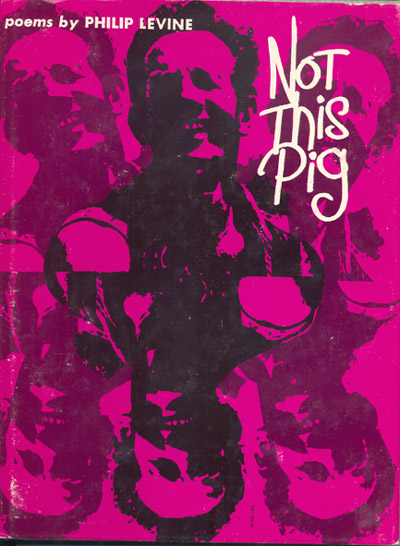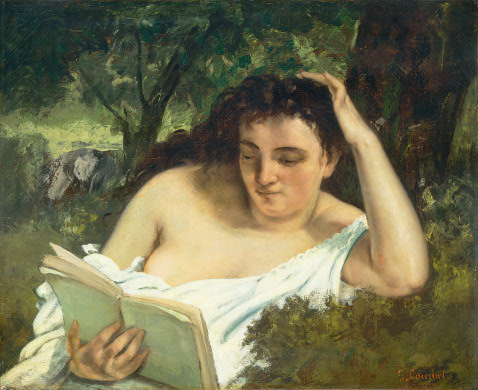![grant_wood_photo_with_parson_weems_fable_1939.jpg Photo of Grant Wood with his painting, "Parson Weems' Fable," in 1939. [Source: Cedar Rapids Museum of Art Archives/Common-Place July 2006/http://www.common-place.org/vol-06/no-04/biel/]](../../../../wp-content/uploads/2011/08/grant_wood_photo_with_parson_weems_fable_1939.jpg.jpg) x
x
Grant Wood with his painting, Parson Weems’ Fable, in 1939. [Source: Cedar Rapids Museum of Art Archives/Common-Place July 2006]
- Common-place: Parson Weems Fights Fascists 0706
Steven Biel describes the Grant Wood’s painting, Parson Weems’ Fable: “Parson Weems, imitating Charles Willson Peale’s pose in The Artist in His Museum (1822), opens a red velvet curtain on the legendary scene: Augustine Washington, elegant in crimson coat, white ruffle, tan breeches, silver-buckled pumps, and green tricornered hat, grasps in his right hand the slim trunk of the bent cherry tree. A row of cherries dangles from the perfectly rounded treetop, mirroring the very cherry-like fringe of the Parson’s curtain. Augustine’s outstretched left palm and furrowed brow signal a serious inquiry. His son George, boyish in stature and dress—coatless, with sky-blue breeches and petite buckled pumps—is manly in his expression. In fact, his white-wigged head is that of Gilbert Stuart’s portrait and the dollar bill. He points with his right hand to the hatchet in his left. Wood chips lie in the circle of soil at the base of the tree, its lower trunk smoothly incised and poised to split off.
- Book Review - Grant Wood - By R. Tripp Evans - NYTimes.com 102810
Grant Wood painted his creaky masterpiece in 1930, amid the ravages of the Great Depression. Unable to move forward, Americans glanced back and found consolation in images of the sturdy agrarian past. Wood rose to fame as one of the three leaders of Regionalism (Thomas Hart Benton and John Steuart Curry were the other two) and, dressed in his bibbed overalls, presented himself as an antidote to East Coast pretentiousness. “All the really good ideas I’ve ever had came to me while I was milking a cow,” he said, somewhat goofily, in his most famous statement. In his absorbing and thoughtful new biography, “Grant Wood: A Life,” R. Tripp Evans, a professor of art history at Wheaton College in Massachusetts, dismisses the artist’s folksy declarations and devotion to Regionalism as a mere cover, an expedient camouflage, for his tortured private life. - In The Arctic Race, The U.S. Lags Behind : NPR 081911
The Coast Guard has told Congress it needs at least three medium and three heavy icebreakers. Global warming means more activity in the Arctic, and more civilian vessels are venturing north into harm’s way. In early August, the Obama administration gave a tentative green light to Shell Oil to start drilling for oil in the waters north of Alaska. The U.S. is also in the process of mapping the seafloor north of Alaska, with an eye to claiming more of the continental shelf, and the resources it may contain. The increased activity means the U.S. could face more challenges to its interests in the polar latitudes. Yet the U.S. isn’t party to a major treaty that will shape territorial claims in the region. Lisa Murkowski: “We are an Arctic nation. And as such, we have responsibilities and obligations in the Arctic.” It’s not just about icebreakers; she says it’s time for a deep-water port on Alaska’s north shore.
- Poet Laureate Philip Levine Reads From His ‘Work’ : NPR 081211
America’s new poet laureate, Pulitzer-Prize winner Philip Levine, reads some of his work from What Work Is, his 1992 collection of poems about the working class. This segment was originally aired in 1991.
- Tom Wolfe: Chronicling Counterculture’s ‘Acid Test’ : NPR
Tom Wolfe began his career as a journalist, writing for The Washington Post, Rolling Stone, Esquire and New York magazine. In the ’60s, he pioneered a style that he later named “the new journalism” — reporting that applied some of the techniques of fiction — like descriptive scene settings, dramatic tension, and dialogue. In this new and flamboyant style, Wolfe wrote about Ken Kesey’s LSD experiments in the book The Electric Kool-Aid Acid Test. In 1987, Wolfe spoke to Terry Gross about writing The Electric Kool-Aid Acid Test and about his trademark three-piece white suits, which he continued to wear while following Kesey and the Merry Pranksters.
- Ken Kesey On Misconceptions Of Counterculture : NPR
Ken Kesey, a leading figure of the counterculture movement, popularized LSD and other hallucinogens and wrote two of the era’s most popular books, Sometimes a Great Notion and One Flew Over the Cuckoo’s Nest. He was also the subject of The Electric Kool-Aid Acid Test, Tom Wolfe’s account of West Coast hippies after spending three weeks with the Merry Pranksters. In 1987, Kesey joined Fresh Air’s Terry Gross for a conversation about his writing and his role as a counterculture figure. He told Gross that Wolfe’s novel, which followed Kesey and the Merry Pranksters across the United States, was a good book but created some misconceptions.
- Writer Robert Stone Relives Counterculture Years : NPR 081211
The new documentary Magic Trip: Ken Kesey’s Search for a Kool Place gathers never-before-seen footage shot during the Merry Pranksters’ LSD-fueled bus trip across America in 1964. Kesey, the author of One Flew Over the Cuckoo’s Nest, was the ringleader. The bus was driven by Neal Cassady, who was the inspiration for the main character in Jack Kerouac’s novel On the Road. On Friday’s Fresh Air, we’ll hear interviews with Kesey in 1989; with Tom Wolfe, who chronicled the bus trip in his best-seller The Electric Kool-Aid Acid Test; and with Robert Stone, who met the bus and hung out with Kesey, Cassady and the Pranksters when they arrived in New York. This interview with Robert Stone was originally broadcast on Jan. 3, 2007.
- Magnum Photographer Elliott Erwitt Honored With Lifetime Achievement Award : The Picture Show : NPR 081511
Elliott Erwitt’s novel approaches to getting the shot have paid off. In May, the International Center of Photography gave him a Lifetime Achievement Award. And a show of his works in New York celebrates some Erwitt images that have a permanent home in our mind’s eye. | Another classic image in this show of more than 100 of Erwitt’s favorite photographs was taken in 1955, on assignment in France. It shows a long country road, lined on both sides with trees. A man in a beret, with a little boy behind him, peddles a bike down the road. Their backs face us. Tied to the rear of the bike are two long, skinny baguettes.
- Nancy Wake, ‘White Mouse’ of World War II, dies at 98 - The Washington Post 080911
The Gestapo called her “The White Mouse” for the way she deftly avoided their traps. Nancy Wake, 98, who died of an infection Aug. 7 in London, was one of the most effective and cunning British agents working in German-occupied France during World War II.
- The White Mouse: WWII Hero’s Story Will Live On : NPR 081311
Nancy Wake… she was best known as The White Mouse. Wake was born in New Zealand but eventually landed in London. Described as sultry and glamorous, Wake never traveled anywhere without her Chanel lipstick and a favorite red satin pillow. Before the war, she married a French industrialist. Their tastes, said the Washington Post, ran to caviar and champagne mid-morning and love in the afternoon. But when war broke out, Wake signed up. And after being trained by British intelligence, she helped arm - and lead - 7,000 French Resistance fighters. Wake and her team are credited with saving the lives of hundreds of allied soldiers. The Gestapo put her on the top of their most-wanted list. And they gave Wake her moniker, dubbing her The White Mouse for her skill in avoiding traps. Wake was the inspiration for the Sebastian Faulks’ novel “Charlotte Gray,” which was made into a film starring Cate Blanchett. She died in London August 7th, three weeks shy of her 99th birthday.
- New Prose Revitalizes ‘Literary Brooklyn’ : NPR 081211
Sometimes, when walking Brooklyn’s streets, it doesn’t feel as if its literary past is haunting. Rather, its literary soul is still alive and pulsating. Brooklyn is a world unto itself and a writer’s enclave. Walt Whitman had his office at the Daily Eagle near the Fulton Ferry dock. Hart Crane wrote his masterpiece about Brooklyn’s masterpiece, the bridge. Henry Miller’s beloved Williamsburg is further north along the East River and has its own bridge. Journalist and critic Evan Hughes has written a literary biography of the leafy borough, Literary Brooklyn: The Writers of Brooklyn and the Story of American City Life.
- » Ashif Jaffer Offended by Offence
York University would not allow Jaffer to write his exams while accompanied by a teaching assistant – the extraordinary accommodation that had enabled Jaffer to graduate from high school as an “Ontario Scholar” (a student who achieves 80% or higher in six Grade 12 courses). It is asserted that Jaffer needs a teaching assistant during exams to “help get the full answers out so that he can write them down” because Down syndrome has “altered” his brain’s “retrieval functions ” (Daniel Girard, “School Denies Access”, Toronto Star, December 5, 2006, p. D6). Although it is not clear if Jaffer was accepted in a degree program at Ryerson, the documentary raises questions about the extent to which universities should accommodate the mentally disabled. It is one thing to allow intellectually challenged people to audit courses and benefit from participating in a university environment; it is another to award degrees that assume that certain skills and learning outcomes have been achieved.
- Ryerson University - School of Disability Studies
Ryerson University’s School of Disability Studies, established in 1999, is the first in Canada to offer a degree education that is strongly rooted in a disability studies perspective. We offer a distinct undergraduate program that illuminates the extent to which the lives of disabled people are shaped by patterns of injustice, exclusion, discrimination and the rule of social, cultural and aesthetic ‘norms’. Put another way, Ryerson University’s School of Disability Studies does not teach about disability, but rather teaches about social and material worlds, beginning from disability.
- BBC - BBC World Service Programmes - Your World, The Education of Ashif Jaffer 091411
Every day Ashif Jaffer heads out to Toronto’s Ryerson University, satchel in hand and makes his way to a seminar classroom. By his very presence in that classroom, he is breaking new ground
- BBC iPlayer - Your World: The Education of Ashif Jaffer
Can a young Canadian man with Down’s Syndrome get a university degree?
![gustave_caillebotte_paris_street_rainy_day Gustave Caillebotte. Paris Street, Rainy Day (La Place de l’Europe, temps de pluie). 1877. Oil on canvas. Art Institute of Chicago. [Source: Wikimedia Commons]](../../../../wp-content/uploads/2009/02/gustave_caillebotte_paris_street_rainy_day_1877_wiki.jpg)
![Fog at Isle Royale [Source: wildmengoneborneo.com] Fog at Isle Royale [Source: wildmengoneborneo.com]](../../../../wp-content/uploads/2008/04/isle_royale_fog.jpg)
 If there is an emerging genetic underclass, I could run for class president or class clown. Read more in
If there is an emerging genetic underclass, I could run for class president or class clown. Read more in 
